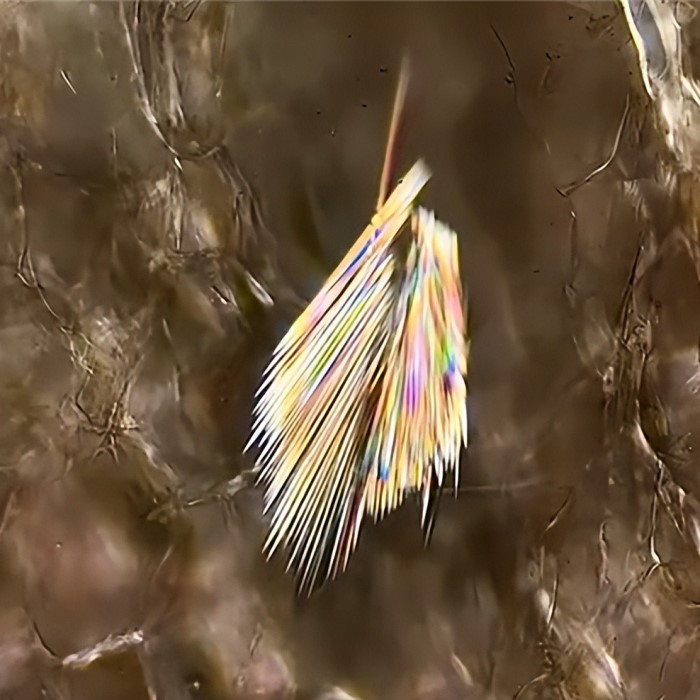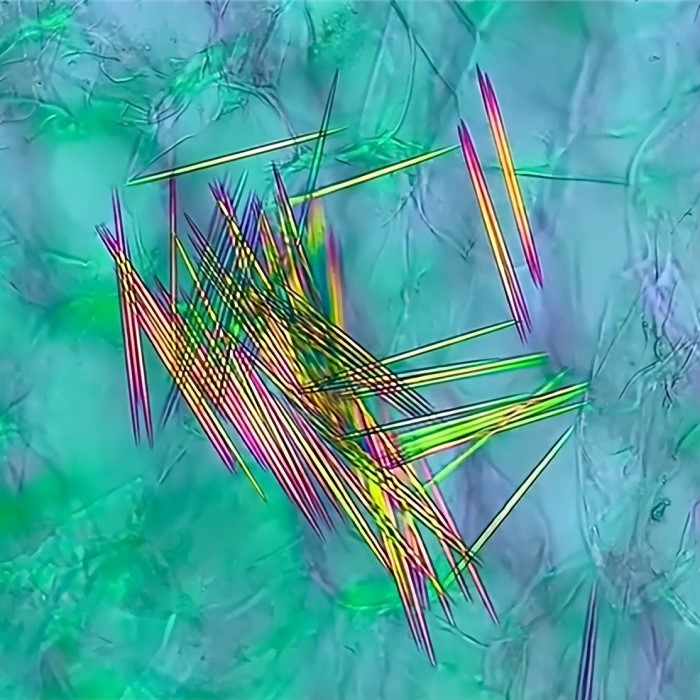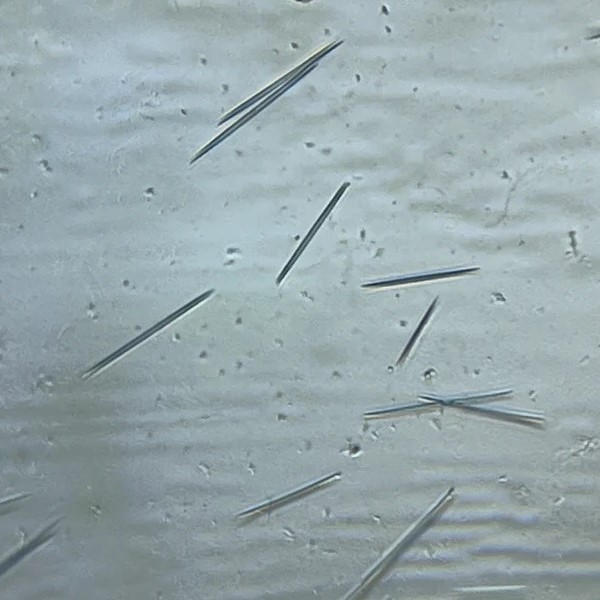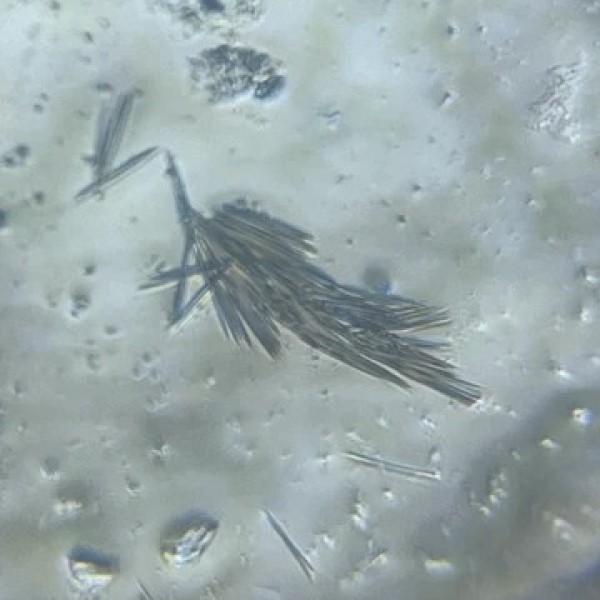Introduction to Pineapple and Microscopy
Pineapples are a popular tropical fruit enjoyed by many around the world. Known for its sweet and tangy flavor, it has carved a special place in our diets. But there’s more to this fruit than meets the eye. Underneath the spiky exterior, microscopic components influence our experience of eating the fruit for pineapple under microscope. Microscopy is a tool that allows us to magnify small objects and see details invisible to the naked eye. When we apply this technology to study foods like pineapple, we uncover surprising facts. For instance, using a microscope reveals tiny structures called raphides within the fruit. These are microscopic, needle-like crystals.

The tingling sensation that some people feel when eating pineapples is often attributed to these microscopic elements. Initial curiosity spurred by personal experiences led to deeper investigations. Accounts like SF Microscopy on social media platforms like TikTok have shed light on this phenomenon. They use microscopes to show the tiny structures in common fruits, making scientific discoveries more accessible to the public.
This microscopic view into the world of pineapples opens up discussions about how we interact with what we eat. It raises questions about allergens, plant defenses, and our bodies’ reactions. In the next sections, we will delve into what causes that curious tingling sensation and explore the role of raphides and bromelain in pineapples.
The Curious Tingling Sensation
Many people report a strange tingling after eating pineapple. This sensation has sparked widespread curiosity.
Investigating Pineapple Tingling Sensation
When you bite into a juicy piece of pineapple, you might notice your mouth feeling tingly. This intriguing sensation leads many to wonder if they might be allergic to the fruit. However, the cause is likely to be the presence of raphides – microscopic, needle-like crystals found in the pineapple.
These raphides, apart from causing that prickling feeling, serve as a defense mechanism for the plant. They deter insects and animals from eating the fruit, protecting the seeds of the pineapple. The sensation is amplified by bromelain, an enzyme in the pineapple that can break down proteins in the mouth, causing a tingling or burning sensation.
This phenomenon was highlighted by the TikTok user @SF_Microscopy, who used microscopy to show these crystals. Their video, viewed millions of times, has brought this peculiar characteristic of pineapples to a broader audience. Insights like these challenge our understanding of what may sometimes be mistaken for food allergies. They emphasize the intricate interactions between our food’s microscopic components and our bodily reactions.

Understanding Raphides in Pineapples
Pineapples pack a punch, not just in flavor but in defense. Inside these tropical treats lie raphides, microscopic crystals with a big job. These needle-like crystals fend off hungry insects, safeguarding the fruit’s seeds. But for us, they’re the source of that mysterious mouth tingle after a pineapple snack.
Role of Raphides and Bromelain
While raphides play defense, bromelain enters as an enzyme with a talent for breaking down proteins. This combo is why pineapples can leave your mouth feeling prickly. Bromelain amplifies the effect of the raphides, leading to that distinctive tingling sensation some mistake for an allergy. The tiktok user @SF_Microscopy revealed this fact with a video, putting pineapple under microscope and showcasing these natural defenders. This captivating find underscores the complexity of our food and its interaction with our bodies.
Microscopic Examination of Other Fruits
Exploring pineapple under microscope reveals surprising details, but they are not the only fruits with hidden secrets. Many other fruits contain components that can cause similar reactions to pineapples when consumed.
Similar Effects in Kiwis, Grapes, Taro, and Yams
Microscopic Structures in Fruits:
Just like pineapples, other fruits such as kiwis, grapes, taro, and yams possess unique microscopic structures that influence our sensory experiences.
These fruits contain tiny, needle-like crystals known as raphides, similar to those found in pineapples, which contribute to the sensations experienced when consuming them.
Raphides and Their Purpose:
Raphides are crystalline structures found in the cells of certain plants. They serve an important protective function for the plant.
The discomfort caused by these raphides acts as a deterrent to insect predators, discouraging them from consuming the plant. This natural defense mechanism enhances the plant’s chances of survival in the wild.
Surprising Microscopic Discoveries:
When examined under a microscope, the discovery of raphides in kiwis, grapes, taro, and yams can be quite surprising; these tiny crystals are often hidden within the succulent flesh of the fruits.
Observing these structures allows us to appreciate the complex and fascinating ways plants defend themselves. The presence of raphides is a testament to the evolutionary adaptations shared among various fruit species.

Commonality Across Plant Species:
The existence of raphides in a variety of fruits underscores a common survival strategy among plants. It illustrates how different species use similar mechanisms to protect themselves from threats.
This highlights the interconnectedness of plant life and suggests that defenses like raphides may be more widespread across the plant kingdom than previously recognized.
Misperceptions About Food Sensitivities:
For some individuals, the presence of raphides can lead to a tingling or irritating sensation in the mouth after consuming these fruits.
This reaction can often be misinterpreted as an allergic response, leading people to unnecessarily avoid these healthy foods.
Clarifying the Tingling Sensation:
Understanding the role of raphides helps clarify misconceptions surrounding food sensitivities. It reveals that such sensations are not necessarily indicative of an allergy but rather a natural response to the plant’s protective structures.
By recognizing the true cause of discomfort, individuals may be less inclined to eliminate these nutritious fruits from their diets.
Implications for Dietary Habits:
Knowledge of how raphides function may aid individuals in managing their reactions when consuming fruits like kiwis, grapes, taro, and yams.
This understanding can empower consumers to make informed dietary choices, allowing them to enjoy these fruits while being mindful of their body’s responses.
Fascination and Further Exploration:
The examination of these pineapples under microscope not only captivates the curiosity of fruit lovers but also serves as an educational opportunity to learn about plant biology.
Researchers and educators can use the study of raphides to promote understanding of plant defenses and food science, encouraging deeper appreciation for the natural world and its complexities.
The Impact of Microscopic Discoveries on Dietary Choices
The insights gained from putting pineapple under microscope have a big influence on what we choose to eat. Learning about the presence of raphides and the action of bromelain may lead some to avoid pineapples. Others might see this as a natural characteristic of the fruit and continue to enjoy it.
Personal Dietary Decisions
- Varied Reactions to Raphides: People have diverse responses when they learn about the presence of raphides in pineapples. Raphides are needle-like crystals of calcium oxalate, which can cause a tingling sensation in some individuals.
- Sensitivity Levels: Individuals with more sensitive mouths or those prone to oral discomfort may opt to avoid eating pineapples altogether. Their personal health and comfort take precedence over enjoyment of the fruit.
- Resilience Among Consumers: On the other hand, many consumers may choose to continue enjoying pineapples despite the slight discomfort. They perceive the tingling sensation as a temporary and manageable side effect rather than a reason to eliminate the fruit from their diet.
- Importance of Awareness: Being informed about the facts surrounding raphides and their effects empowers individuals to make dietary choices that align with their personal comfort levels and health considerations.
- Informed Choices: Ultimately, understanding the nature of raphides allows people to weigh the pros and cons of eating pineapples. Those who enjoy the fruit may decide that the taste and nutritional benefits outweigh any minor discomfort.
- Individual Comfort and Health Needs: Each person’s decision will be influenced by their unique experiences and needs, reflecting the broader principle that dietary choices are deeply personal and can vary greatly from one individual to another.
Informed Consumption
With this knowledge, individuals can eat more mindfully. They can better understand the reactions their bodies have to certain fruits. This awareness brings a new layer to enjoying food. It’s not just about taste, but also about knowing the science behind it.
Broader Dietary Impact
The discovery of raphides isn’t just about pineapples. It extends to other fruits like kiwis, grapes, taro, and yams. Recognizing the widespread of these microscopic structures influences the perception of these foods too. It can alter the choices of those with or without sensitivities across a variety of fruits. Thus, these microscopic discoveries are reshaping how we view our diets on a larger scale.
These findings complicate what we thought we knew about food. But they also empower us with more information. Such knowledge helps us make better choices tailored to our preferences and bodily reactions.
Viewer Reactions and Discussions
The revelation about pineapples when examined under a microscope has sparked various reactions among viewers. After seeing the SF Microscopy account showcase the raphides in pineapples, many individuals are grappling with their own sensory experiences of eating this tropical fruit. Comments on the video highlight the diverse opinions and concerns people have regarding the tingling sensation they may have previously attributed to potential allergies.
Some viewers express sheer astonishment at discovering the microscopic structures within pineapples that cause discomfort. The awareness of these tiny, needle-like crystals prompts them to reconsider their past experiences with the fruit. They often share stories of mouth irritation or soreness after consuming pineapples and similar fruits like kiwis and grapes, now possibly linked to raphides.
Others convey a sense of relief, learning that their reactions might not signify an allergy but rather a natural plant defense mechanism. This knowledge brings comfort to those who previously thought they had to avoid pineapples due to health concerns.
Some discussions branch out to the dual role of bromelain, an enzyme that intensifies the effect of raphides. Intrigue arises over its protein-breaking abilities and the prospect of using pineapples in cooking to tenderize meats.
However, not all reactions are of curiosity and enlightenment. A few individuals have declared their intention to steer clear of pineapple under microscope altogether to avoid the uncomfortable sensation, while others admit they’ll continue to enjoy the fruit, accepting the tingling as part of the experience.
The sharing of these perspectives forms a community dialogue on social media platforms, leading to a broader understanding of how microscopic discoveries affect our everyday lives. The SF Microscopy TikTok video has effectively turned a casual snacking moment into an opportunity for public education and interaction over the complex relationship between humans and the food we eat.
Conclusions and Further Questions
The exploration of pineapple under microscope has led to fascinating insights. The presence of raphides, microscopic needle-like crystals, brings clarity to the tingling sensation many report. This sensation, once possibly seen as an allergic reaction, now unveils nature’s intricate defense mechanisms.
Yet, this revelation brings forth more questions. How do these microscopic elements affect our long-term health, if at all? Do cooking methods impact the presence or effects of raphides and bromelain? Could there be dietary benefits to these naturally occurring substances that we have yet to understand?

We have also seen how knowledge shapes our choices and experiences with food. Some may now approach fruits like pineapple under microscope with caution or curiosity. Does this newfound understanding of microscopic components lead to better overall dietary awareness?
As we continue to share and discuss these discoveries, we contribute to a larger conversation on food safety and nutrition. We’re prompted to think about how micro-level details can have macro implications on our dietary habits. The power of social media platforms, like TikTok, in bringing scientific knowledge to the public is undeniable.
More research is needed to fully grasp the implications of raphides and similar substances found in fruits. Yet, the conversations spawned by these microscopic mysteries hold the key to unlocking further areas of study. What other everyday foods hold secrets waiting to be discovered under the microscope? As we delve into the microscopic world, only time and continued inquiry will reveal the full impact on our diet and health.





